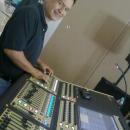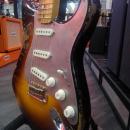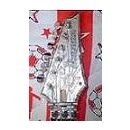oye hurm, pero es que yo tengo problemas con el sonar. tengo una motu 828, y cuando la configuro en sonar con los wmd,me reconoce la mitad de las entradas, y cuando elijo asio,solo me deja trabajar a48 khz en vez de a 96, y para colmo no me suena nada!!!

Hola, kurcob
y qué versión de sonar tienes?
Saludos

Pues nada, ahí estamos a la que se ofrezca.
Saludos

si javicon,XP SP2. ya esta todo solucionado,la verdad es que era una autentica gilipollez: tengo mis monitores en el taller de reparacion, y mientras estoy trabajando a traves de mis cascos. pues lo que pasaba es que el proyecto de sonar pone por defecto la salida de las pistas directamente a las "main outs" de la motu,por eso no escuchaba nada!!!
Pero ya esta arreglado, y la verdad es que no hay color con respecto a cubase en cuanto a estabilidad,no hay manera de colgarlo!!!
ademas,el motor de audio esta mas pulido, cargando menos la cpu, y la funcion frezze es una verdadera maravilla.
Definitivamente, he encontrado mi secuenciador.
gracias a todos y salu2

greacias javicon,lo haré
salu2

La cuestión ASIO o WDM en Sonar depende sobre todo de la calidad de los drivers de cada tarjeta, no de Sonar en sí. Yo uso dos tarjetas ESI Waveterminal 2496, que me dan ocho entradas y ocho salidas y alcanzo una latencia de 1,5ms en WDM, así que no veo la necesidad de usar ASIO con Sonar. Por otro lado, los drivers WDM de las nuevas tarjetas de EMU tienen fama de ser una castaña indecente.
Para los interesados que entiendan el inglés, ahí va algo más de info:
""The difference between various driver models boils down to how the driver's kernel-mode component talks to its user-mode component.
Quick aside: User-mode is where applications like SONAR, IE, Word, etc. live. Kernel-mode is the lowest level area in the OS, where OS features such as memory protection, thread scheduling, etc. are implemented. As in most modern OS's, you cannot directly access hardware in user-mode; you must be in kernel-mode. A "device driver" is the code whose job it is to live in kernel-mode and talk directly to the hardware.
Win32 Driver Model (WDM) is very thoroughly designed and documented framework that defines how kernel-mode drivers talk to hardware. Microsoft provides documentation, driver qualification, etc, for WDM drivers. Furthermore, for audio drivers, WDM provides a way for user-mode applications to talk directly to the kernel-mode drivers. This is the Kernel Streaming (KS) interface.
Thanks to this design, SONAR can implement it's lower edge (the part that talks to the driver) using the KS interface, knowing that any WDM compliant driver will behave in the expected ways.
By comparison, ASIO is pretty different beast. ASIO defines how an audio application can talk to an audio driver, but doesn't specify *anything* about how the driver is to be implemented. So a host can implement a lower edge that talks ASIO, and can usually get consistent behavior just like KS. But there are some subtle and important differences.
First, I said with ASIO you can "usually" get consistent behavior. The issue here is that ASIO doesn't have nearly the degree of documentation and support that WDM/KS has. Let's face it, Microsoft is an orders of magnitude bigger company than Steinberg. The documentation team for KS is probably bigger than Steinberg's entire development team.
For ASIO, the end result is that many driver vendors test ASIO under Cubase, and then declare victory. Because the ASIO specification is unclear in some places, different hosts behave differently, and without a qualification system there's no easy way to ensure consistent behavior.
The other subtle difference between ASIO and WDM/KS is that ASIO doesn't specify how the kernel-mode piece gets written. A vendor is pretty much left on their own to figure out how to write their .SYS driver.
Ironically, if an audio hardware vendor wants to write an ASIO driver, they'll probably grab the Windows driver development kit (DDK), and look up the chapter on writing kernel-mode audio drivers. This chapter is all about writing WDM/KS drivers!
So in many cases, an ASIO driver has a WDM/KS kernel-mode piece at its core. This means that SONAR can automatically talk to the driver through the KS interface. This point is crystallized in the "ASIO4ALL" driver, which takes the low-level KS interface and wraps it in an ASIO interface.
On the same hardware, either driver should sound the same. A driver doesn't color or affect the sound of a signal. It simply moves the sample bits out to the digital to analog converters. In other words, changing the kind of driver doesn't change the kind of hardware, therefore there is no sonic difference. ""

hace mas de un año que compre una delta 1010, la uso con sonar 3, controladores ASIO y nunca tuve ningun problema, y eso que "exprimo" el sistema. Cada proyecto tiene en promedio 25 canales de audio, a 48khz....
nunca un problema..
es mas, ya tengo el sonar 4, pero no me anmo a instalarlo, ya que estoy en medio de una grabacion, y no quiero correr el riesgo de algun problema.
Resumiendo, es como un reloj suizo!!!

 .
.










